Overview
Existing in a space between Lao and Chinese culture, Phongsali is a rugged province home to traditional hill tribes and stunning mountain views. Muang Khua is the most visited and easily accessible town in the province, and serves as a great gateway to the less reachable areas further north. Only one asphalt road runs from Muang Khua north to Phongsali and further to China. However, don’t plan any excursions into China from here, as foreigners are prohibited from crossing the border anywhere in the province. It does however serve as a fantastic transit point from Laos to Vietnam, taking you to Dien Bien Phu on the Viet side of the border.

A typical village in Phongsali Province.
See and Do
While not as scenic as Nong Khiaw,
Muang Khua possesses a certain charm with its bright
pastel coloured houses and surrounding starburst palm trees. The town itself features little in terms of sightseeing, serving mainly as a gateway to the natural beauty and trekking opportunities further north. There is however
lively markets to explore and a beautiful
temple. The
suspension bridge also offers an elevated view of the Ou and Phak rivers as they reach their confluence and the soaring mountains in the background that should not be missed.
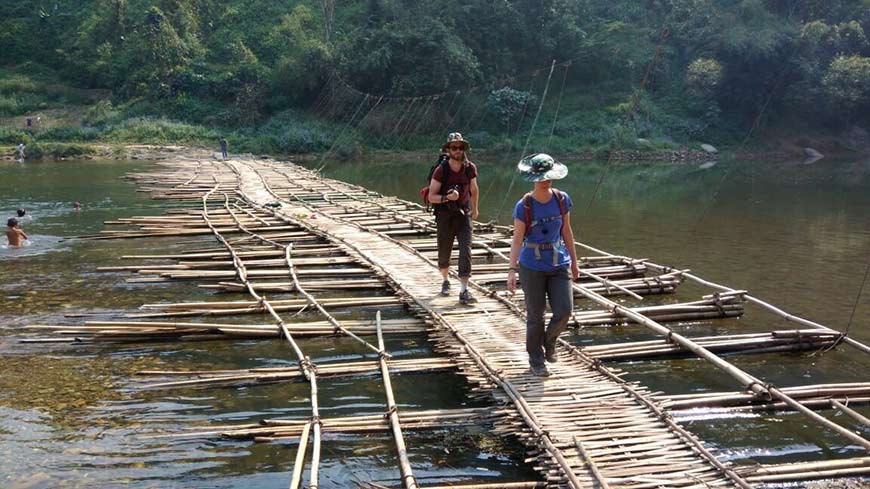
Bamboo bridges are rebuilt every year after the flood.
Further north,
Phongsali town rests on top of a ridge top plateau draped in mist. The inhabitants are a mix of Phu Noi and Yunnanese, and the climate can shift abruptly from pleasantly warm to freezing cold. Going in winter you should expect freezing temperatures at night and warm/water proof clothing is recommended at any time of year.
While the
wooden Yunnanese buildings and
Phu Fa Peak dwarfing the village makes for an interesting sight, the town is not the main attraction in the area, feeling somewhat unfriendly, which is unusual for Laos. Do not fear however, as the trekking you can have in the surrounding area makes the journey here completely worth it.
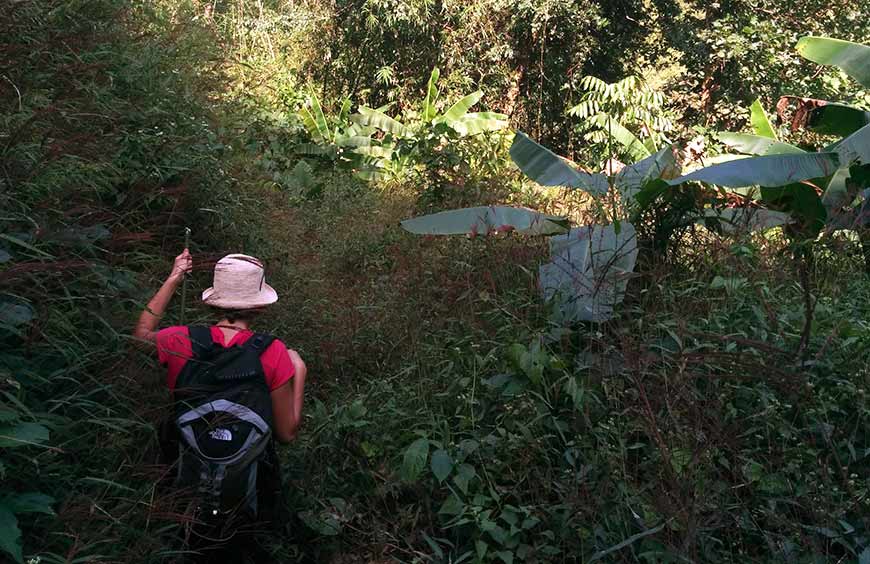
Phongsali is a great area for trekking.
Probably the most famous village around Phongsali,
Ban Komaen, is renowned for its Chinese tea. So much so that the village is home to what is thought to be the world’s oldest tea bushes, coming in at over 400 years old. The village also features stunning views of the surrounding valley, extending a full 360 degrees from the viewpoint behind the school. Ban Komaen lies roughly 15km away from Phongsali and is best reached by motorbike or tuk-tuk.
For a truly “off the grid” experience, take the hour long bus ride from Phongsali to
Hat Sa, where you can spend the night in woven bamboo huts, eat local cuisine at the village’s solitary restaurant and settle in for a night disconnected from the outside world, as the towns power supply shuts off at 9pm.
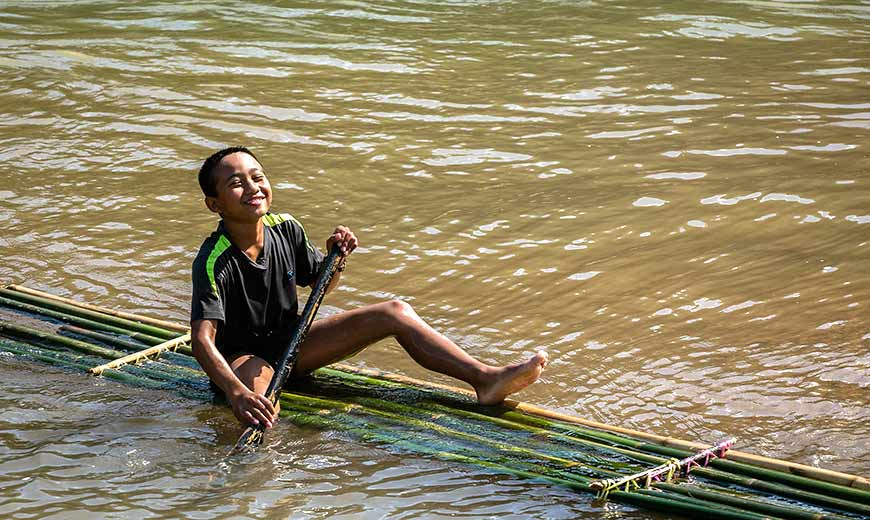
Local man paddling the Ou River in Phu Den Din.
Continuing off the beaten track,
Phu Den Din National Park provides an excellent opportunity to get some truly spectacular views of the lush forest that carpets the mountainous landscape. At this time, the only legal way to see it however is on the daily kayaking trips down the Ou River between Hat Sa and Ban Tha.
Culture & Arts
To get a taste of the culture of the province, a good start is visiting the
Wat in Muang Khua, a tranquil temple serving as one of the towns’ two proper attractions.
Treks to neighbouring villages inhabited by
Akha tribes can also be organized from here, ranging from 1 day excursions to full weeks of visiting villages while volunteering, helping out with various tasks. For the socially-conscious traveller eager to get a close-up look of the Akha culture, this is a wonderful experience which allows you to leave the area better off than when you arrived.
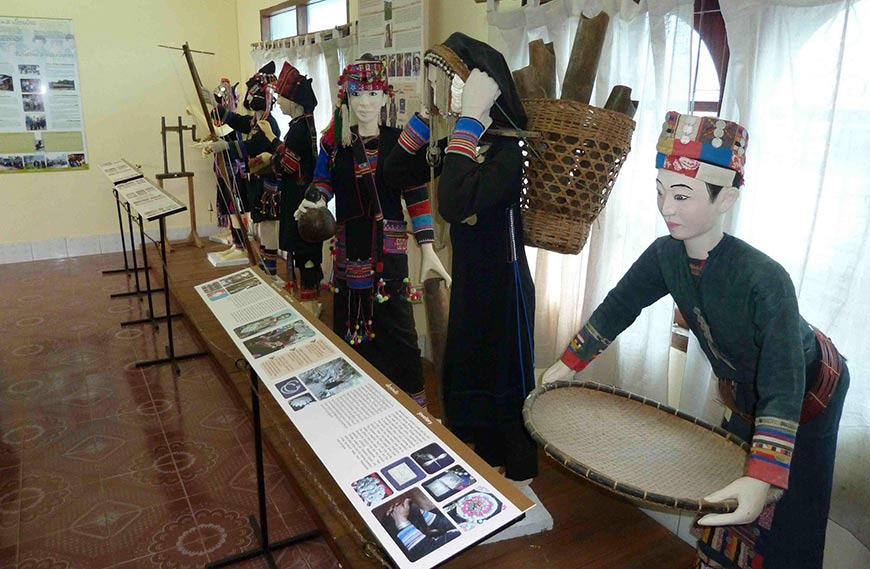
You can learn about the various tribes of Laos at the Museum of Tribes.
In Phongsali, the
Museum of Tribes is worth a visit. Here you can deepen your understanding of the culture and religion of the various ethnic groups of the province, and view historical photographs in addition to displays of local garments that you will encounter everywhere in Phongsali.
Food and Drink
The area is famous for its
Chinese style tea, and this can be had almost anywhere, especially in Ban Komaen, known as “Tea Village”.

Tea is a staple of the region.
Other local staples include
Khao Soi, a soup with wide rice noodles, pork, tomatoes, fermented soy beans, chillies, shallots and garlic and then topped with pork rind, bean sprouts, chopped scallions and chopped coriander. This local favourite can be found in many regions of Laos, but with great variations in how it’s prepared.
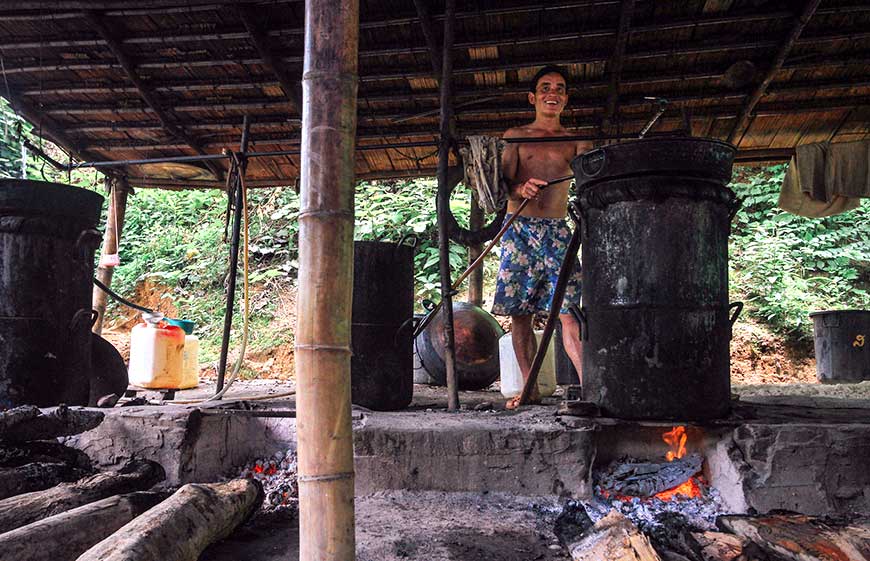
Khao Soi is prepared in large batches.
You can also try your hand at more exotic local dishes, such as pigs liver or local
Lao-Lao whiskey fermented over raspberry leaves.
Festivals and Events
Due to its great ethnic diversity, several distinct new years celebrations take place in Phongsali. While Pi Mai Lao (Lao new year) is the biggest festival, it is also celebrated all over the country and can be enjoyed elsewhere like in Luang Prabang or Vientiane.
More unique to Phongsali is
Boun Greu, or Khmu new year. Held in January, every village in the area celebrates on a separate day, giving you the chance to attend the festivities numerous times should you so wish. In Phongsali town itself this festival is only held once every three years, with the next event scheduled for 2021.
There is also
Kin Jieng, or Hor New Year, when Phongsali town erupts in a dazzling cacophony of fireworks. Held after the year’s harvest, Kin Jieng is a time for locals to thank the spirit of the land and wish for a plentiful harvest in the coming year.